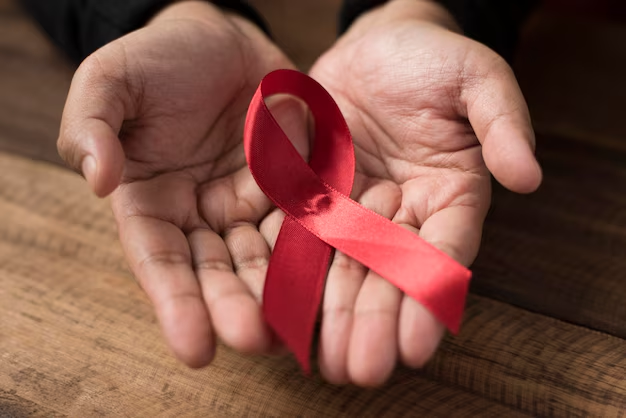Understanding the Symptoms of Leukemia: What You Need to Know
Leukemia, a type of cancer affecting the blood and bone marrow, can often go unnoticed because its symptoms may mimic those of common ailments. Identifying and understanding leukemia symptoms is crucial for early detection and treatment. Whether you’re concerned about a persistent health issue or simply wanting to stay informed, this guide will help clarify the symptoms of leukemia and provide valuable context on this complex condition.
What is Leukemia?
Leukemia starts in the blood-forming tissues, typically affecting the white blood cells, although it can also impact other blood components. These diseased cells multiply and crowd out healthy cells, interfering with the body's ability to function properly. The four main types of leukemia include:
- Acute Lymphoblastic Leukemia (ALL): Most common in children but can occur in adults.
- Acute Myeloid Leukemia (AML): Affects both adults and children.
- Chronic Lymphocytic Leukemia (CLL): Generally found in adults.
- Chronic Myeloid Leukemia (CML): Common in adults.
Recognizing the symptoms is a vital step toward timely diagnosis and treatment.
Common Symptoms of Leukemia
Leukemia symptoms can vary depending on the type, but there are several common indicators to watch for:
Persistent Fatigue and Weakness
Feeling persistently tired, even with adequate rest, is a common symptom of leukemia. This fatigue is not relieved by sleep and extends beyond the usual tiredness experienced in everyday life.
Frequent Infections
Leukemia can impair the immune system, leading to increased susceptibility to infections. Frequent or recurring infections, such as sore throats, bronchitis, or urinary tract infections, may indicate a weakened immune response.
Unexplained Bruising or Bleeding
Unusual bruises, especially in large and conspicuous areas without any apparent cause, may be a sign of leukemia. Additionally, increased bleeding from gums or nosebleeds can be indicative of low platelet counts.
Night Sweats and Fever
Experiencing excessive sweating during the night, often so intense that it soaks through clothing, could be linked to leukemia. Persistent fevers without an obvious cause should also prompt further medical exploration.
Weight Loss and Loss of Appetite
Unintended weight loss and a decreased appetite are common symptoms of various types of cancer, including leukemia. These symptoms can result from the body's increased energy demands to fight the cancer.
Specific Symptoms by Leukemia Type
Each type of leukemia has symptoms that may offer further clues:
Acute Lymphoblastic Leukemia (ALL)
- Bone or Joint Pain: Caused by the growth of leukemia cells in the bone marrow.
- Swollen Lymph Nodes: Especially in the neck, underarm, or groin.
Acute Myeloid Leukemia (AML)
- Skin Rash or Lesions: A rash of tiny red spots (also known as petechiae) caused by bleeding under the skin.
- Swollen Gums: Known as gingival hyperplasia.
Chronic Lymphocytic Leukemia (CLL)
- Unexplained Weight Loss: Often progresses slowly, with weight loss becoming more pronounced over time.
- Night Sweats: Particularly common without changes in temperature or activity level.
Chronic Myeloid Leukemia (CML)
- Spleen Enlargement: Resulting in discomfort or a feeling of fullness in the upper abdomen.
- Fatigue: Continues to be a major symptom as the disease progresses.
When to Seek Medical Attention
Early detection can greatly increase the effectiveness of treatment. Seeking medical advice if you notice persistent symptoms from the above list is important. Remember, having these symptoms doesn't necessarily mean you have leukemia, as they can be related to other health issues.
Diagnostic Procedures for Leukemia
A medical professional can perform several tests to diagnose leukemia:
- Blood Tests: These tests can check for abnormal levels of white blood cells or platelets.
- Bone Marrow Tests: A biopsy can determine the presence and type of leukemia cells.
- Imaging Tests: Such as CT scans, ultrasounds, or X-rays, to check for organ enlargement or other issues.
Understanding these diagnostic tools can help alleviate anxiety about the testing process.
The Emotional Impact of Leukemia
Learning about or being diagnosed with leukemia can have a significant emotional impact. Emotional support, whether from friends, family, or professional counseling, plays a crucial role in navigating the journey of a leukemia diagnosis.
Support Systems and Resources
Accessing resources and support systems early can make a tremendous difference in the experience of living with leukemia. Support groups, both online and in-person, can provide shared experiences and valuable advice. Many organizations, like national cancer societies, offer support, information, and resources tailored to leukemia patients and their families.
Proactive Measures and Lifestyle Considerations
While no sure way exists to prevent leukemia, certain lifestyle choices can aid overall health and potentially reduce risks:
- Healthy Diet: Embrace a diet rich in fruits, vegetables, and whole grains.
- Regular Exercise: Physical activity, appropriate for your health level, can boost well-being.
- Avoiding Harmful Substances: Such as tobacco and excessive alcohol, both of which can impact health.
Staying informed and proactive about your health empowers you to make decisions that best support your well-being.
Concluding Thoughts
Understanding leukemia symptoms and what they could signify is an essential part of taking charge of your health. While symptoms can often be attributed to less serious health issues, it's always prudent to discuss concerns with a healthcare professional. Early intervention can lead to more effective treatment and better outcomes.
Key Takeaways:
- 🩺 Early Detection: Understanding symptoms leads to earlier intervention.
- ❤️ Emotional Support: Utilize support groups and counseling.
- 📋 Regular Check-Ups: Schedule regular health evaluations.
- 👟 Healthy Lifestyle: Maintain a balanced diet and exercise routine for overall well-being.
Remaining informed and attentive to your body’s signals is a proactive step toward health empowerment.

Related Articles
- Can Leukemia Be Cured
- How Do Cats Get Feline Leukemia
- How Do They Test For Leukemia
- How Do You Get Leukemia
- How Do You Test For Leukemia
- How High Are Monocytes In Leukemia
- How Is Feline Leukemia Spread
- How Is Feline Leukemia Transmitted
- How Is Leukemia Diagnosed
- How Long Can You Live With Chronic Lymphocytic Leukemia